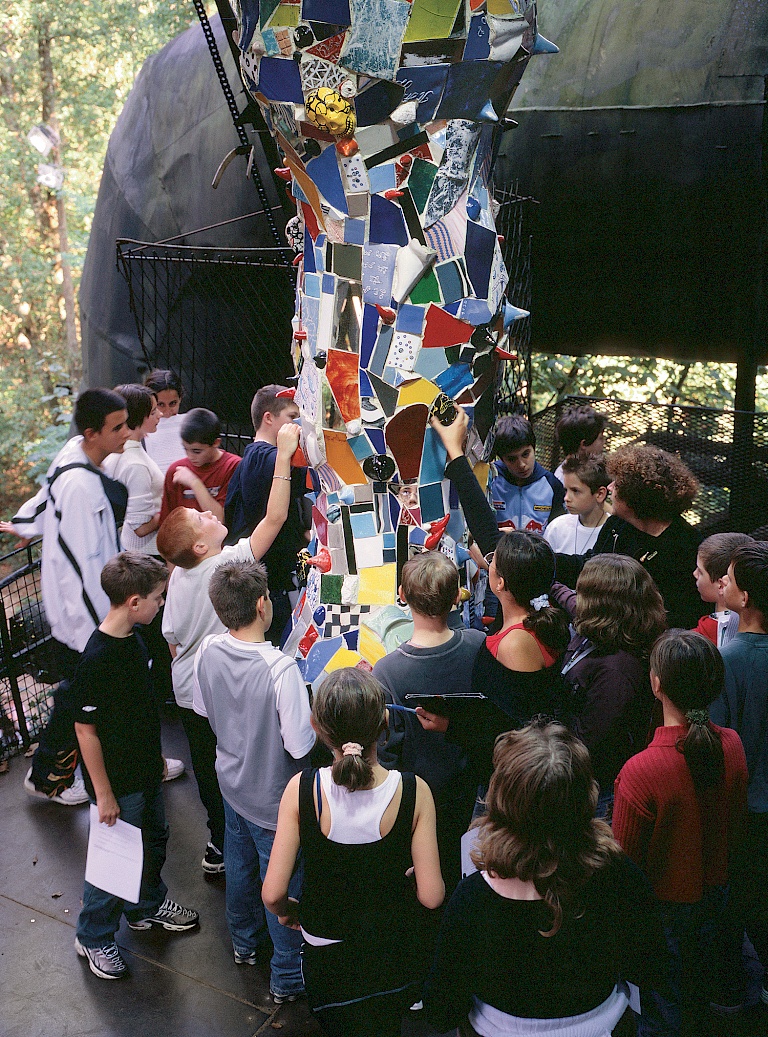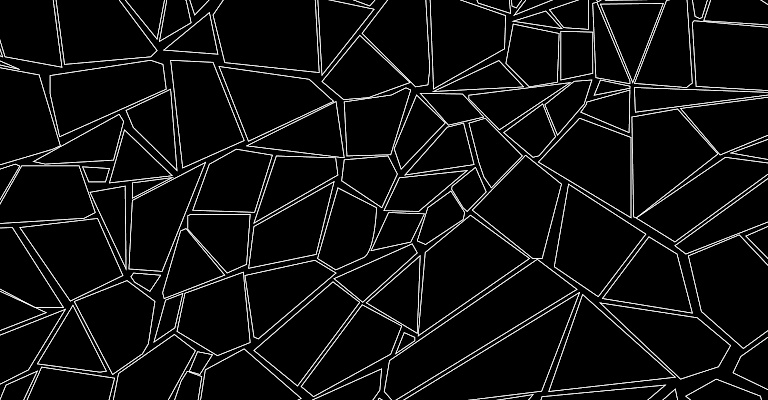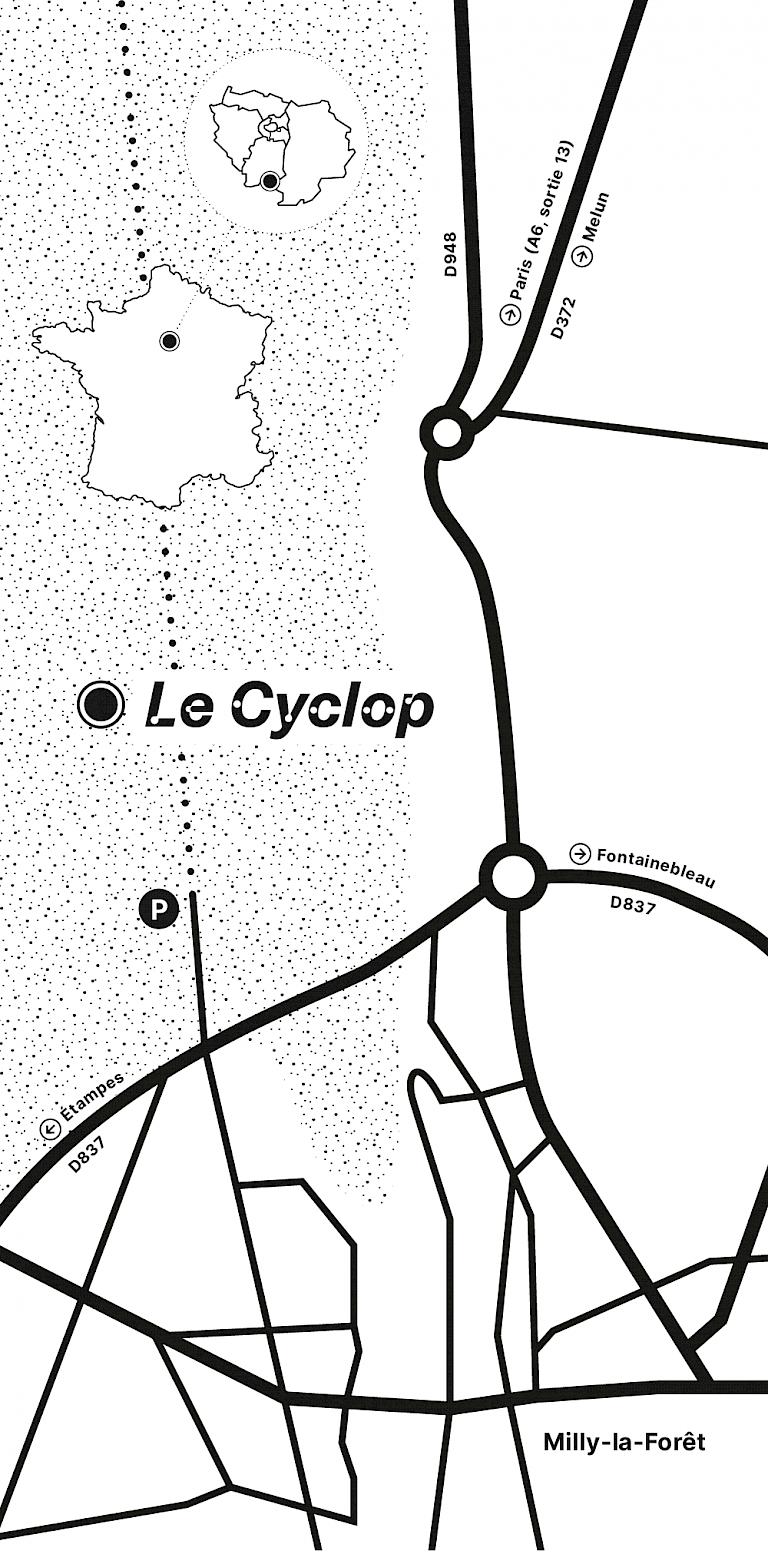History
22.5 metres high and 350 tons of steel… Le Cyclop is a monumental sculptural work that dominates the forest of Milly-la-Forêt (Essonne, Île-de-France). Created by Jean Tinguely with the help of his wife Niki de Saint Phalle and their artist friends (Bernhard Luginbühl, Rico Weber, Daniel Spoerri…), the sculpture comprises an immense head without a body, covered in sparkling mirrors, with a single eye, an ear that weighs a ton, and a mouth from which a trickle of water runs down a slide-tongue. Its interior houses a surprising universe that can be discovered over the course of a labyrinthine route punctuated with artworks and curiosities that are both humorous and sombre: sound sculptures, a small automatic theatre, machinery with scrap-metal gears, etc. Dada, Nouveau Réalisme, Kinetic Art, and Art Brut: four movements rub shoulders in this rich work. Also known as La Tête (The Head) or Le Monstre dans la forêt (The Monster in the Forest), Le Cyclop is a unique monument in art history. But it is above all the fruit of a collective adventure, built with friends, a utopia forged over numerous years by a “team of mad sculptors”, centred around the figure of Jean Tinguely.
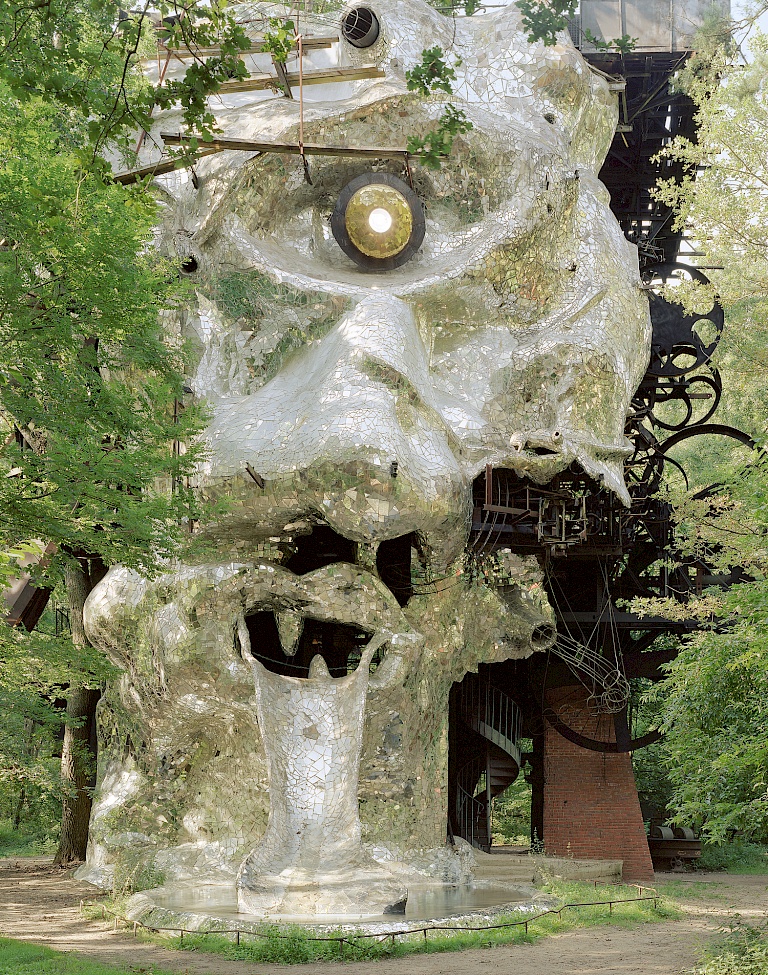
1/4
Le Cyclop, photographie © Tadashi Ono
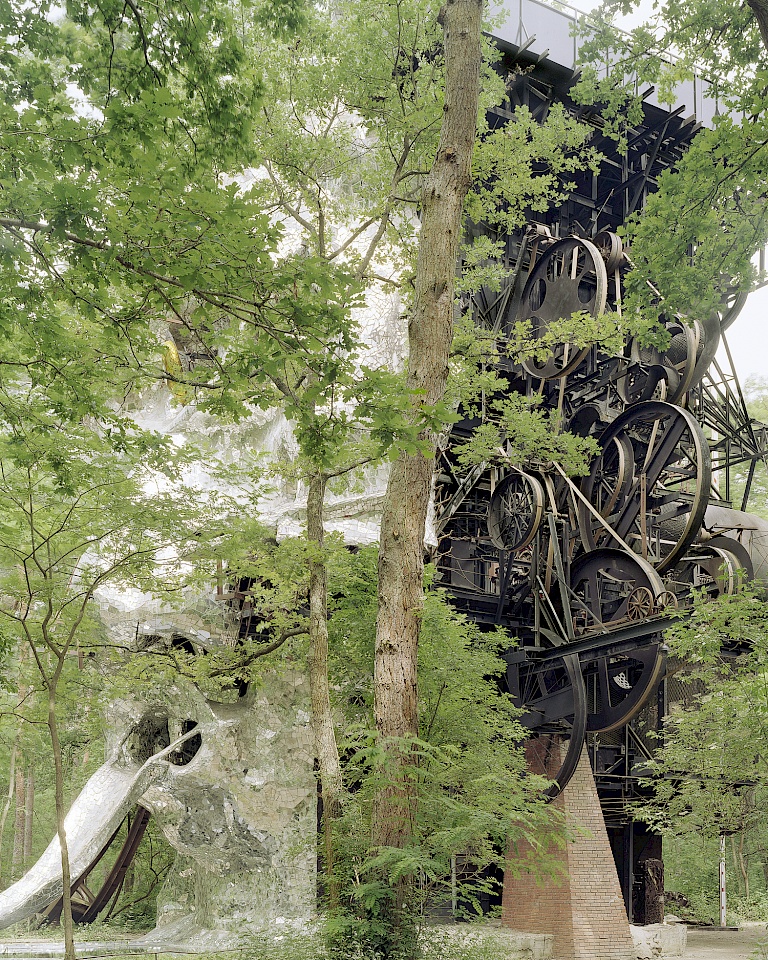
2/4
Le Cyclop, photographie © Tadashi Ono
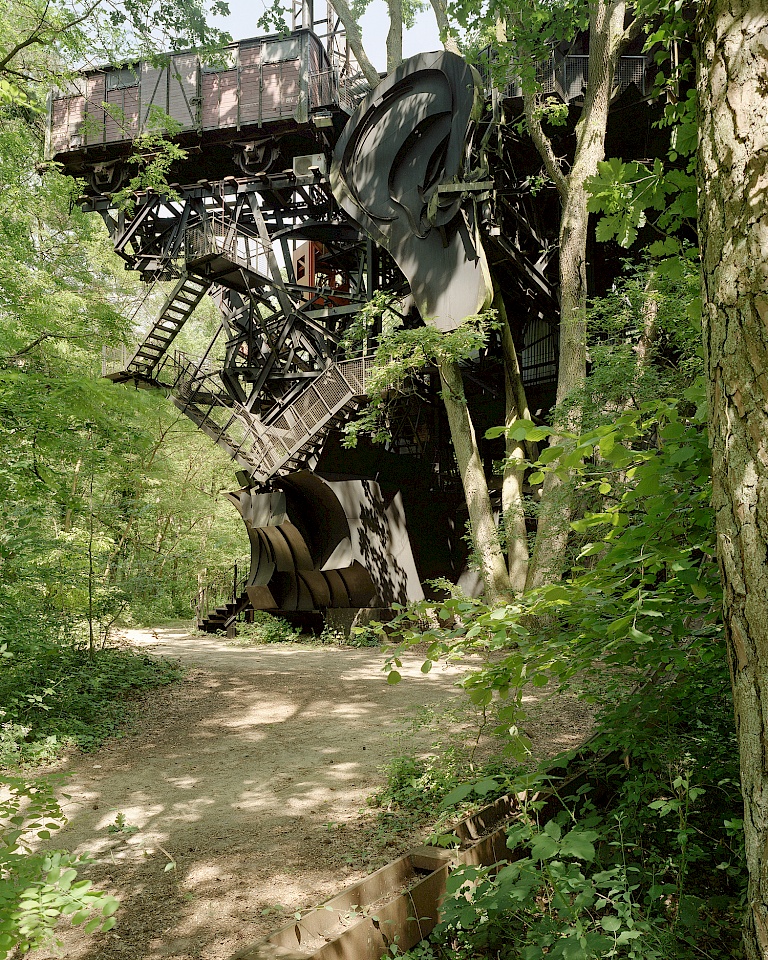
3/4
Le Cyclop, photographie © Tadashi Ono
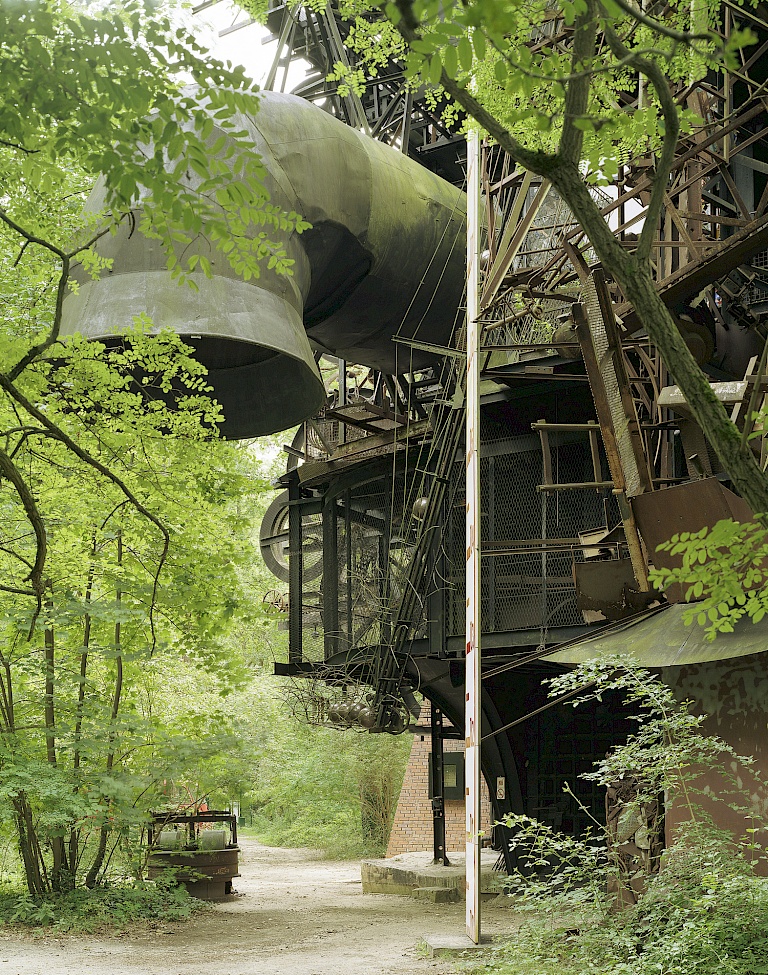
4/4
Le Cyclop, photographie © Tadashi Ono
The latter developed an art based on movement, chance, relative speed, and sound. His sculptures, made from the scraps of industrial society, assemblages of rusty scrap metal, question and unsettle viewers, challenging them with humour and derision. His “anti-machines” are a criticism of Western society: they are useless in that they produce nothing, but nevertheless strive to highlight the flaws of modern technology by ridiculing it. In 1956, Jean Tinguely met Niki de Saint Phalle. As soon as they met, they began producing art together. Throughout their lives, they would be a mutual source of inspiration for each other, both on a human and an artistic level. Complicity, love, rivalry, exchange, and confrontation formed the basis of their collaborations.
In 1968, Jean Tinguely and his friend, sculptor Bernhard Luginbühl, worked together on the Gigantoleum project. They wanted to build a huge sculpture-architecture, a playful interactive space bringing together various artistic fields. The site was to house a circus, fairground attractions, a theatre, cinema, restaurant, and even a huge aviary with thousands of birds! However, the Gigantoleum never saw the light of day. No sponsor wanted to finance this overly expensive and ambitious project. Consequently, Jean Tinguely decided to construct Le Cyclop.
In 1969, work on the project began in the woods around Milly. Jean Tinguely realized that the only way to carry the project through to fruition was to finance the work himself, allowing him to work in complete freedom. No architect participated in its construction and only the artists, with courage, strength, and tenacity, gradually built this titanic sculpture. It took ten years of hard labour to erect Le Cyclop and another fifteen years before everyone’s contributions were put in place.
In 1987, in order to ensure the protection and conservation of the structure, the artists decided to give Le Cyclopto the French State. It entered the collection of the Cnap (National Centre for the Visual Arts). In 1988, the French Ministry of Culture delegated the management of the site to Le Cyclop Association, whose mission is to maintain the site, oversee public visits, and promote the work. In 1991, following the death of Jean Tinguely, Niki de Saint Phalle embarked on a mission to complete the sculpture by financing the last remaining artworks, while respecting the ideas of her late companion as much as possible. In May 1994, Le Cyclop was inaugurated by French President François Mitterrand, and opened to the public. Niki de Saint Phalle decided that Le Cyclop was now finished and that from that time onwards, no other artwork was to be added.
